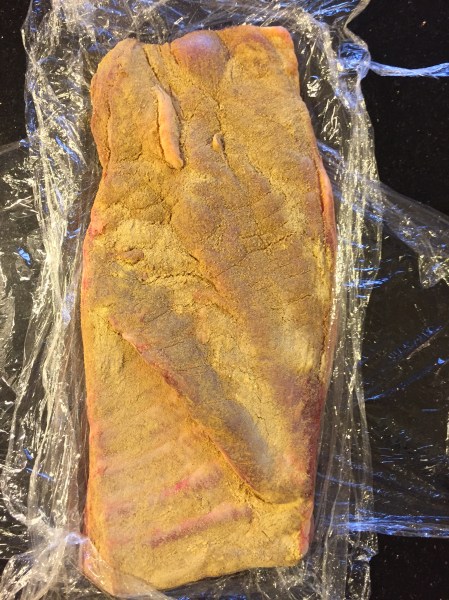When I made ossobuco yesterday, it was the first time I’d made this classic Italian dish, but it certainly won’t be the last. The gentle, long cooking required makes it ideal for the Aga. I accompanied it with risotto alla Milanese, even though I tend to think risotto is not ideal for Aga cooking, because of the need constantly to stir it, but in this case it was in my view necessary and worth it. I know there are ways to make risotto in the oven, and I have successfully made it that way, but on this occasion I wanted to be as sure as possible to achieve the authentic Italian dish, so I stood at the simmering plate, stirring away contemplatively, for twenty minutes or so.
The ossobuco recipe I used was Anna Del Conte’s from her book Gastronomy of Italy which my son gave me for Christmas. It’s a wonderful book. The risotto recipe I used was also from this book.
Ingredients
(Serves 4)
(You will need a large sauté pan or shallow casserole with a tight fitting lid which will hold the ossobuchi in one layer)
- 4 ossobuchi (mine were Marks and Spencer from Ocado)
- Flour, for dusting
- Salt and freshly ground black pepper
- 2 tbsp olive oil
- 40g unsalted butter
- 1 small onion, finely chopped
- 1/2 celery stalk, finely chopped
- 150ml dry white wine
- 150ml chicken stock
For the gremolata (don’t skip it)
- 1 tsp grated lemon zest
- 1/2 garlic clove, very finely chopped
- 2 tbsp chopped flat leaf parsley
Method
- Tie the ossobuchi around and across with string as you would a parcel, then lightly coat them in flour mixed with 1 teaspoon of salt
- Heat the olive oil in the pan you have chosen and brown the floured ossobuchi on both sides. I started them on the simmering plate and then transferred them to the floor of the roasting oven. Cook them for just 4 or 5 minutes on each side. Remove them to a dish
- Add 25g of the butter to the pan followed by the onion and celery. Add a little salt and soften without browing (shouldn’t take more than 10 or 15 minutes in the simmering oven)
- Return the meat and any juices to the pan on the simmering plate
- Heat the wine quickly in a pan on the boiling plate and pour it over the meat and boil to reduce by half (could move it to the boiling plate for this but keep an eye on it so it doesn’t completely evaporate)
- Heat the stock in the same pan you used for the wine and pour this over everything and add some black pepper. Put the lid on the pan and transfer it to the simmering oven for at least three but maybe four or five hours (as you know, it will not spoil in the simmering oven), depending on when you want to eat
- Transfer the ossobuchi to a warmed dish, removing the string. Keep warm in the warming oven, on the warming plate or near the Aga covered in foil
- Add the remaining butter, having cut it into a few small pieces, to the sauce and as soon as the butter has melted, remove the pan from the heat; you don’t want the sauce to boil
- Pour the sauce over the meat
- Mix the gremolata ingredients together. I spinkled mine over the ossobuchi, but have re-read the recipe and see I was supposed to stir it into the sauce before pouring it over. Perhaps it would have tasted even better if I’d done it the “correct” way!










 and wanted to make my sauce with these instead of the usual tinned tomatoes. I’m sure in Italy this sauce is made with fresh tomatoes a lot of the time, but until relatively recently we couldn’t even buy fresh plum tomatoes here so we all use tinned. I knew the San Marzano was considered to be a superior tomato and a quick Google search revealed that it’s also sweeter and less acidic than other plum tomatoes. I normally add a little sugar when cooking tomatoes but didn’t in this case: they were sweet enough.
and wanted to make my sauce with these instead of the usual tinned tomatoes. I’m sure in Italy this sauce is made with fresh tomatoes a lot of the time, but until relatively recently we couldn’t even buy fresh plum tomatoes here so we all use tinned. I knew the San Marzano was considered to be a superior tomato and a quick Google search revealed that it’s also sweeter and less acidic than other plum tomatoes. I normally add a little sugar when cooking tomatoes but didn’t in this case: they were sweet enough.




























